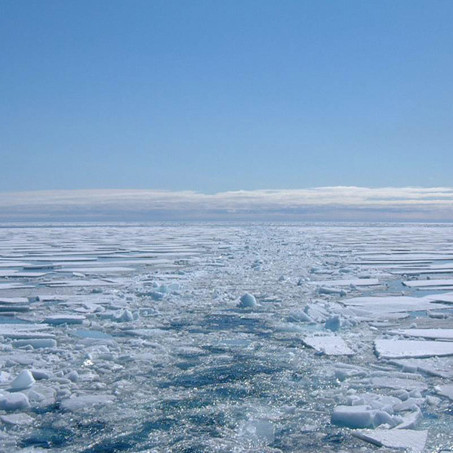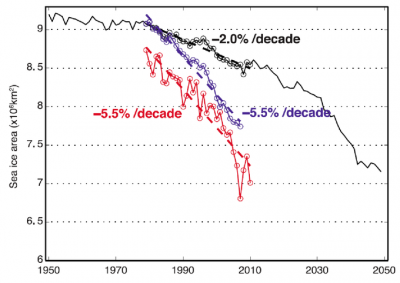Sea ice
Sea ice plays a key role in the climate system by mediating numerous feedback mechanisms. Observations indicate that sea ice cover in the Arctic Ocean has continuously declined over the last three decades, i.e. the time period for which good data coverage exists. Over the past decade the trend towards less ice has been accelerating . Along with the shrinking sea-ice extent, the amount of multi-year sea ice has also significantly decreased in favor of first-year ice. Importantly, models used for future climate projections fail to reproduce the current rate of sea-ice decline, suggesting significant shortcomings in the representation of sea-ice dynamics. A crucial question in this context is, to which extent the ongoing trend can be explained by natural variations and what part of it must be attributed to anthropogenic forcings. To answer this question, the observational data base needs to be extended.

This will be achieved through novel and improved paleoceanographic proxies which make use of remnants of marine algae associated with sea ice (i.e. diatoms, dinoflagellates). ArcTrain will extend the database of sea-ice reconstructions for key locations and thereby contribute to an improved understanding of past sea ice variability. Improved algorithms for the analysis of satellite data will serve to establish a consistent and reliable time series of the Arctic multiyear sea ice.

The mismatch between observed (red) and modeled (black) changes (solid lines) in annual mean Arctic sea-ice cover and linear trends for the years 1979-2010 (dashed lines). Model results, representing the ensemble mean of 13 IPCC models (black), only match the observations, if adjusted to a positive trend in sea-ice speed at fluxgates (blue) (Rampal et al., 2011).
The evolution of the proportion of multiyear and first-year ice has to be urgently addressed, because of the large effect of this ratio on the heat exchange between ocean and atmosphere or marine biological productivity. To this end, the new reconstructions for the instrumental period will be compared with runs of sea-ice and ocean circulation models. Taken together, the combined information on sea-ice variability and sea-ice processes over a wide range of timescales (interannual to millennia) will be used to benchmark and improve the representation of sea-ice dynamics in climate models.


